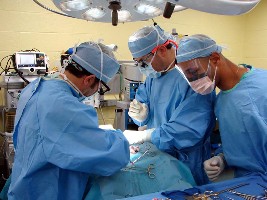A team of researchers from the Johns Hopkins University schools of medicine and public health in Baltimore, Maryland has proposed ways of reducing the environmental footprint of surgeries without compromising patient care. Their recommendations, which also offer potential significant cost savings to hospitals, appear in the February issue of the journal Archives of Surgery (paid subscription required).
The team, led by JHU surgery professor Martin Makary, says health care has become the second leading contributor to waste in the United States, following the food industry, producing more than 6,600 tons per day. Operating rooms and labor-and-delivery suites together, the researchers say, account for nearly 70 percent of hospital waste.
Makary’s team made a systematic review of the literature, identifying some 43 published articles. The researchers also surveyed a panel of hospital managers and chief executive officers of health care organizations pursuing green initiatives.
The team explored safe and efficient strategies for hospitals and providers to protect the environment while delivering high-quality care. A significant potential target for hospitals is in reducing waste. In surgical suites, for example, two kinds of disposal bags are used to separate waste: red bags for infectious and pathology waste and clear bags for noninfectious waste. Makary says that as much as 90 percent of what ends up in red bags does not meet the criteria for red-bag waste, which costs far more to process. He adds that the volume of medical waste could be decreased by more than 30 percent solely by proper waste separation.
Another potential green initiative involves reusing and recycling equipment and supplies, which the authors note can be accomplished without compromising patient safety. One medical center cited in the study began washing and reusing all of its surgical scrubs and jackets. The reuse of scrubs and jackets, along with a program of reducing red-bag waste, cut the center’s medical waste volume by half over seven years.
The authors say some medical equipment can be reprocessed with proper sterilization, recalibration, and testing. Items such as laparoscopic ports in some minimally-invasive surgeries and durable cutting tools typically tossed out after a single use, say the authors, can be made safe for reuse.
* * *


 RSS - Posts
RSS - Posts
[…] Read more: Cutting Waste and Costs in the O.R. […]